The Selinunte Archaeological Park

The files of the Archaeological Park of Selinunte have been inserted in the Archaeological database of Sicily 3.0 (subset of Data Maps Heritage). Below is a brief summary of the sheets, referring to the description of the details Interactive map of the Selinunte Archaeological Park
Selinunte (Greek Selinos, Latin Selinus) was an ancient Greek city founded in 651 BC by colonists from Megara Nisea, who settled in Megara Hyblaea on the site previously populated by Sicans, Elymians and Phoenicians. It soon became an imposing city full of temples and with a population presumed to have been 100.000. Selinunte allied herself with Carthage but after the Battle of Himera (480 BC) she made a pact with Syracuse that distanced her from the protection of Carthage. In 409 BC it was destroyed by the Carthaginians no longer allied. In 405 the Carthaginians allowed the return of the population, following the Syracusan Ermocrate, but by now Selinunte was destined to be only a small town in the third century it was practically abandoned, except for a sporadic presence in the Byzantine and early Middle Ages. Starting from the eighteenth century it began to become of interest to travelers and scholars, including Houel who made it famous with his drawings. Excavation work began in the XNUMXth century and slowly brought to light the remains of what was once one of the largest Greek cities in western Sicily.
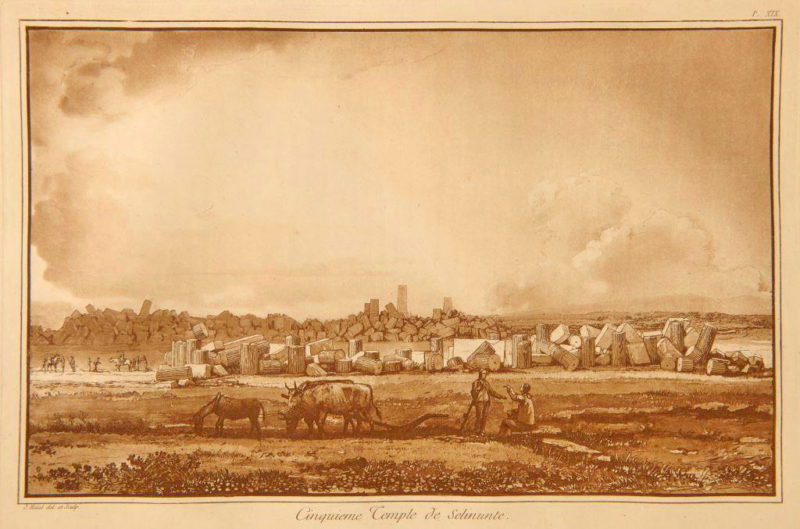
The remains of ancient Selinunte are found on the territory of the municipality of Castelvetrano, in the southern part of the province of Trapani. All the land involved today forms one of the largest archaeological parks in the world (260 hectares). The archaeological site is rich in monumental ruins that testify to the ancient splendor of Selinunte.
Acropolis
The acropolis is located on a slightly raised esplanade on the surrounding plain. It was defended by ramparts and defense towers, in some cases still visible.
Temple D (Athena or Aphrodite)
Temple D, built around 540 BC, is dedicated to Athena, according to some to Aphrodite.
Temple C (Apollo?)

In the temple were found: from the decoration of the frame some fragments of polychrome terracotta (red, brown, purple); from the decoration of the pediment a gigantic clay gorgoneion (h. 2,50 m); from the facade three metopes representing: Perseus, in the presence of Athena, in the act of decapitating Gorgon who holds Pegasus to himself; Heracles, having captured the Cèrcopi (goblins-thieves), carries them away suspended from a pole upside down; the quadriga of Apollo seen from the front (the god was flanked by the figures of Helios and Selene: incomplete), which are all in the Archaeological Museum of Palermo.
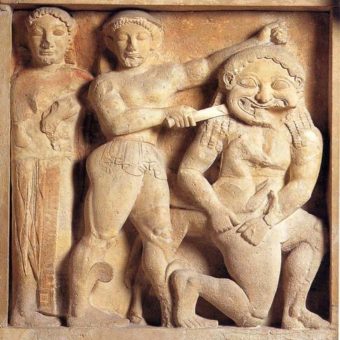
Perseus killing the Medusa
From Youtube
***
Temple B
Built in the third century. BC, is the only religious building that attests to the modest rebirth of the city after its destruction in 409 BC
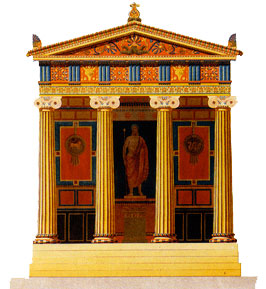
Reconstruction of Hittorf (1824)
Temple A (Dioscuri or Apollo?)
Built between 490 and 460 BC The pronaos of Temple A has a mosaic floor where the symbolic figure of the Phoenician goddess Tanit, a caduceus, the sun, a crown and a bovine head are represented: it testifies to the reuse of the environment in Punic era as a religious place or as a home.
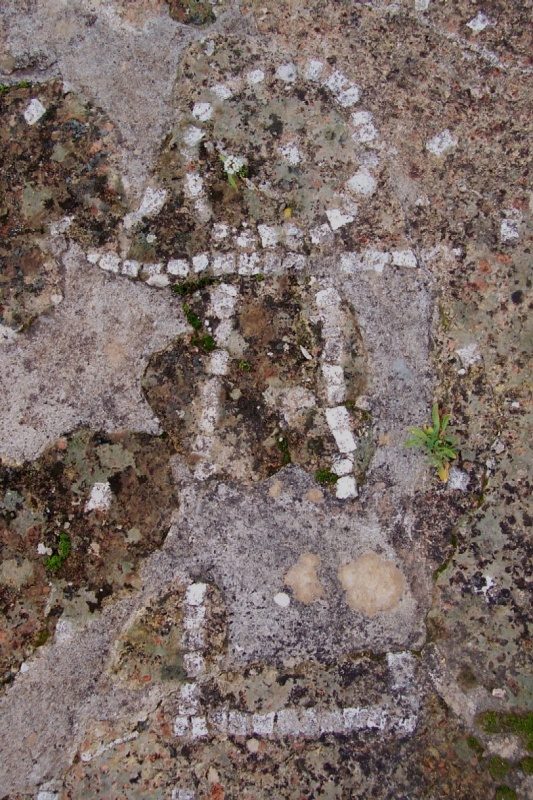
Temple O (Poseidon or Athena)
Built between 490 and 460 BC
Tower of Pollux
Erected in 500 and incorporates one of the towers of the ancient city
Eastern Hill

Temple G (Apollo?)
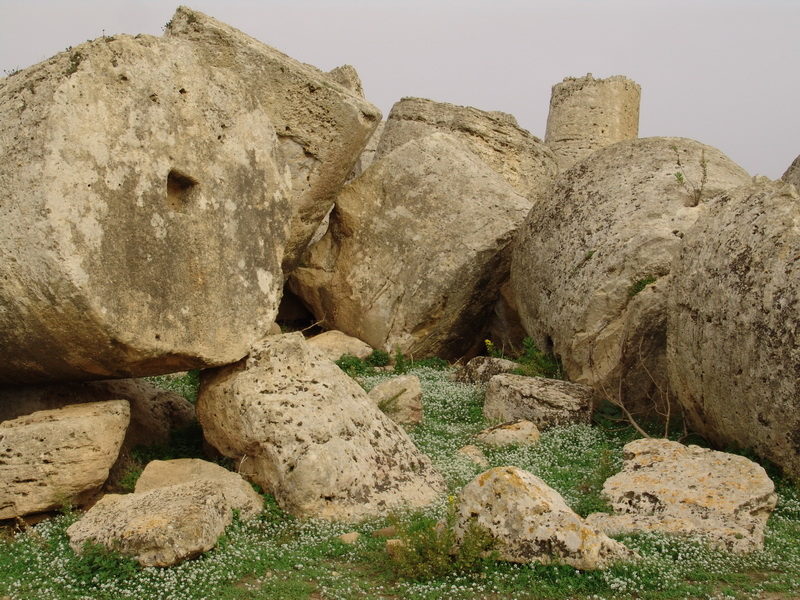 It is the largest temple in Selinunte. with columns 16,5 meters high. It is supposed to be dedicated to Apollo.
It is the largest temple in Selinunte. with columns 16,5 meters high. It is supposed to be dedicated to Apollo.
***
Temple F (Athena or Dionysus?)
In archaic Doric style built between 560 and 540 BC From the facade we have two late archaic metopes (dated to 500 BC) found during excavations in 1823, representing Athena and Dionysus in the act of beating two Giants to death, now preserved in the Museum Regional Archaeological of Palermo

Gicantomachia from Temple F (Athena striking a giant)
***
Temple E (Hera)
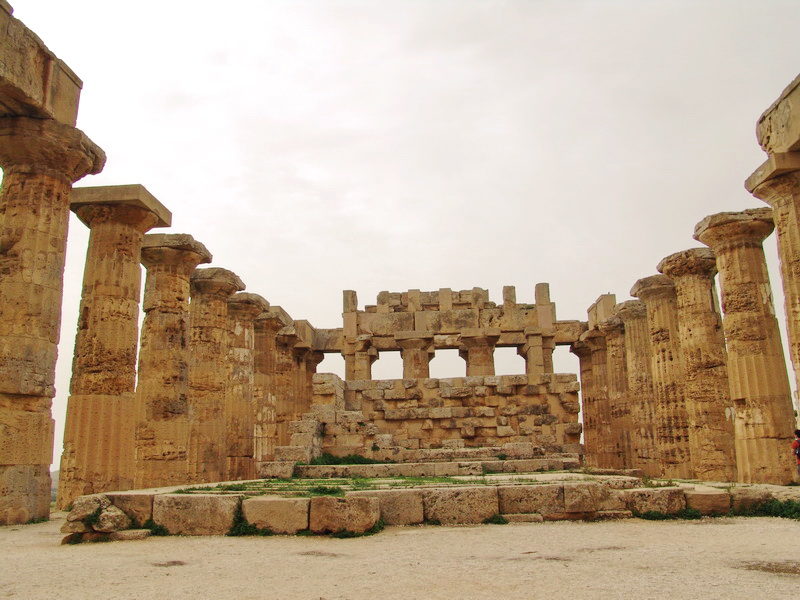
Erected between 460-450 it is believed to be dedicated to Hera (the Roman Juno). The 4 metopes from this temple: Artemis and Atteone, Athena and Enceladus, Zeus and Hera and Heracles, are now kept at the Regional Archaeological Museum of Palermo
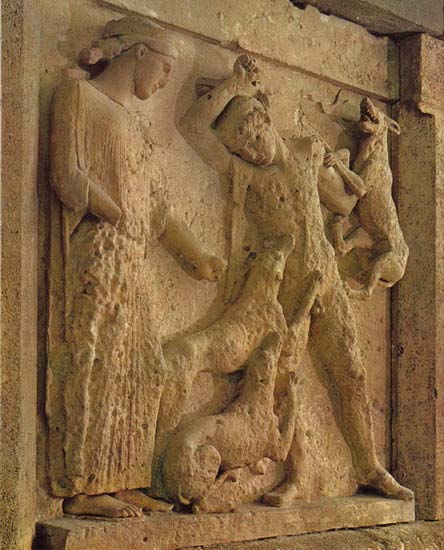 Actaeon mauled by dogs and Artemis
Actaeon mauled by dogs and Artemis
***
Manuzza Hill
To the north of the acropolis, on the hill of Manuzza, is the ancient settlement originally surrounded by defensive walls. The place was inhabited since the foundation of Selinunte (VII century BC). After the destruction of Selinunte, this area of the city was never re-inhabited. The refugees who returned in the retinue of Hermocrates, who were allowed to return to the city by the Carthaginians, settled only on the acropolis.
Galera Bagliazzo Necropolis
To the north-east of the Manuzza Hill, older than the Manicalunga Necropolis, it is located outside the perimeter of the park. In the Galera Bagliazzo necropolis the bronze statue known as
"Efebo di Selinunte", purchased by the municipality of Castelvetrano, stolen in 1962 and later rediscovered, currently preserved in the Civic Museum of Castelvetrano
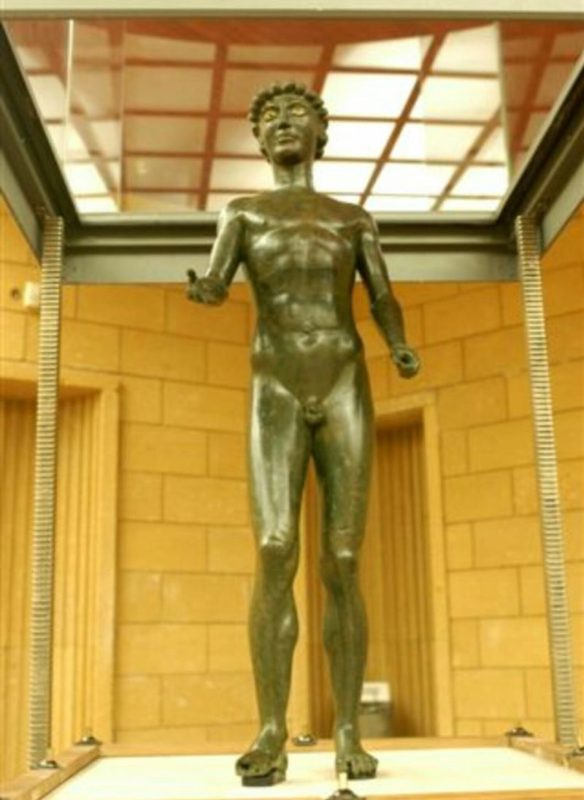
Ephebe of Selinunte (Castelvetrano Museum)
***
Temple Y
Built in 570 BC, the metopes found (h. 84 cm), datable to 570 BC, represent: a squatting profile sphinx, the Delphic triad (Latona, Artemis, Apollo) in a rigid frontal pattern, the rape of Europa at the above the sea; two other metopes dating to ca. 560 BC, reused in the hermocratic fortifications, show the quadriga of Demeter and Kore (or Helios and Selene? Apollo?), and an Eleusinian ceremony with Demeter, Kore and Hecate with the ear of corn (the Moire?), are all preserved at the Archaeological Museum of Palermo.
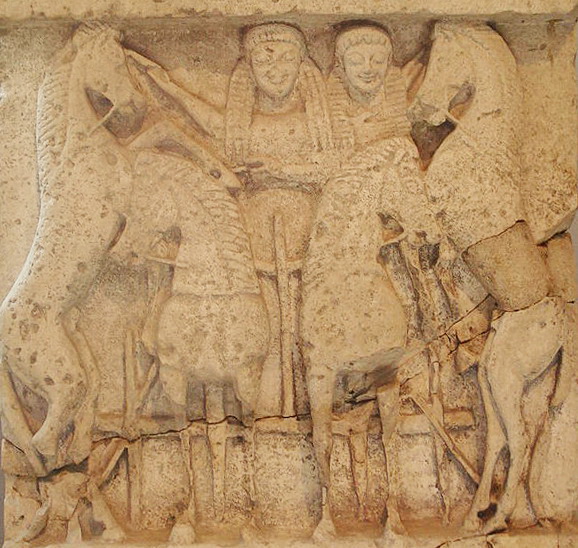
Demeter and Kore on a quadriga
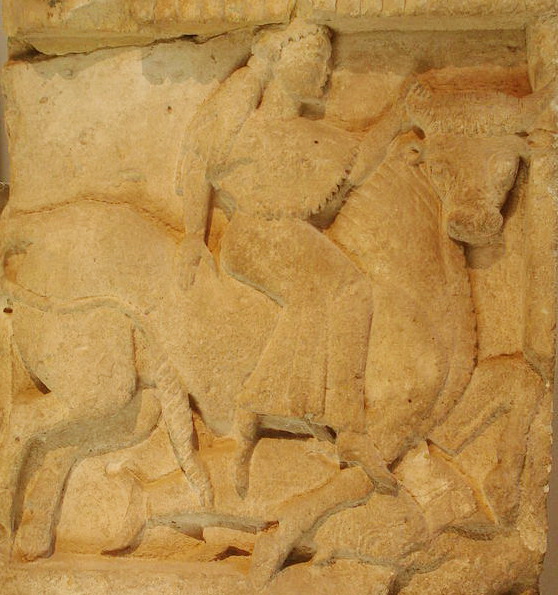
Europe on the bull
Gaggera Hill
Sanctuary of the Malophoros (Demeter Malophoros)

Plan of the Sanctuary of the Malophoros (from Koldewey, 1899)
Built in the XNUMXth century. BC Dedicated to Demeter Malophoros, it is supposed to have been used as a resting place for the funeral processions that continued to the necropolis of Manicalunga.
Temple M
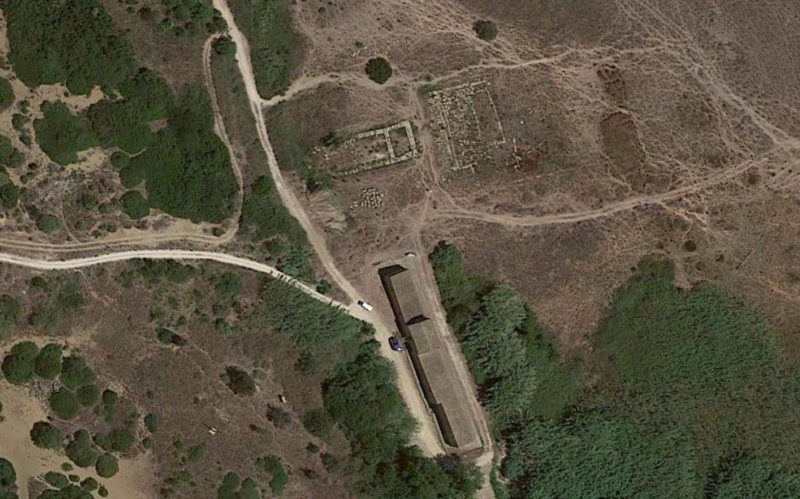
Immediately after the current Antiquarium della Gaggera and a few meters away where the source of the Gaggera which fed the Sanctuary of Demetra Malophoros was, there are the remains of Temple M built in the XNUMXth century BC of which only the foundation blocks remain.
***
Antiquarium of the Gaggera
The antiquarium of the Gaggera collects finds related to the excavations in the various sacred areas of the area. Clay statuettes, venerated at the time in sanctuaries, vases and objects of all kinds offered as ex voto by the faithful constitute the documentary corpus that is placed under the eyes of the visitor.
***
Necropolis of Manicalunga and Timpone Nero
It is the largest in Selinunte, discovered in 1871 by the archaeologist FS Cavallaro. Numerous rectangular tombs have been found in it, about 2 meters deep and closed by tuff slabs.
***
Insights from the Net:



